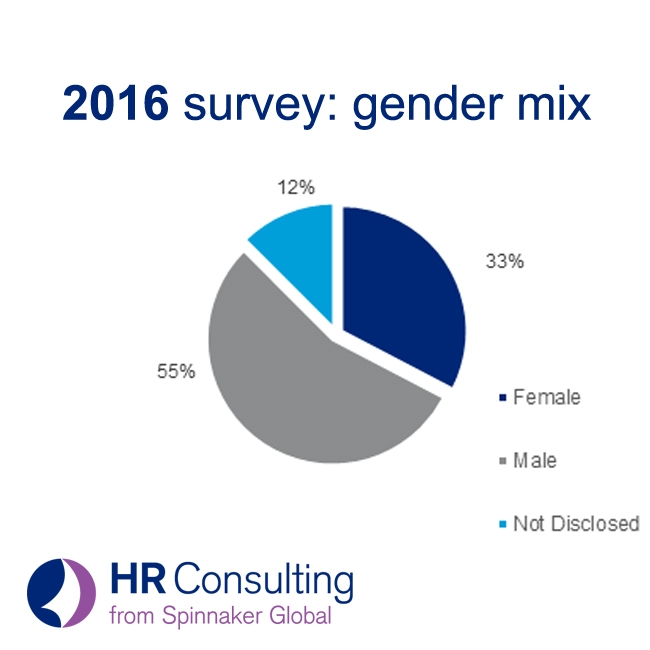Changing Course
Share this blog
Latest Maritime Vacancies
Business Development – Shipmanagement – Dubai
Office Manager – London
Shipping Paralegal – London
Shipping Manager – Singapore
Office Administrator – London
Equal Pay Day

November 10th is known as Equal Pay Day. It has been calculated that because of the gender pay gap, from November 10th to December 31st every year, women are technically working for “free” compared to their better-paid male counterparts. The Maritime HR Association at Spinnaker Global is pleased to be able to share some high level gender analysis from this year’s salary survey on Equal Pay Day 2016.
2016 is the first year in which we have collated gender information alongside our salary data. Of nearly 21,000 shore-based employees captured within the survey, 55% were male and 33% female (the remaining 12% were not disclosed).
The large proportion of our members who shared this information is a positive sign in itself – with only 16% of members unable (or choosing not) to disclose this data.
This initial overview probably isn’t surprising; as an industry maritime has tended to attract more males than females. And perhaps to some the gap might not be as broad as first thought. This is a global picture though; and the following chart shows a breakdown by key regions:
Countries across the Middle East and India show the least female representation, while members across Europe, Canada, the United States and Developed Asia show females accounting for around 35% of their workforce.
Possibly the most surprising result here is the strong representation of women across emerging Asia Pacific countries; the most noticeable country of which being the Philippines. Here we see 66% of the workforce represented by women, fairly evenly split across job families too – but particularly well represented within the Crewing and Finance functions.
When we look at pay specifically; we see the women within our sample earning a median salary of $37,390 per annum compared to $73,433 for men. That’s a huge gap with men earning, on average, 96% more than women – and the difference increases further to 108% when we look at overall, total compensation packages!
I guess this is to be expected; we found a greater number of males working in the Middle East (where relatively high salaries can be found) while the largest female workforce is found in emerging Asia (where salaries will naturally be lower).
This definitely warrants more detailed analysis over the coming weeks, at both the job family and seniority levels. We hope to identify where any key issues lie, share these with our members and helping find solutions to address them. It’s our first year of reporting this data too, so we’re keen to track how this improves in the coming years.
Equal pay has been a hot HR topic for pretty much all of my professional life, and the slow rate of change means it’s probably going to be with me until I retire. That could feel quite disheartening, but I do believe that any positive change – however small – is a step in the right direction. There’s no avoiding the issues, and in fact the sooner we face up to them the easier they will be to address. I’m pleased to be doing my little bit – are you?
Sarah Hutley, Compensation & Benefits Consultant, HR Consulting, Spinnaker Global
www.hrc.spinnaker-global.com